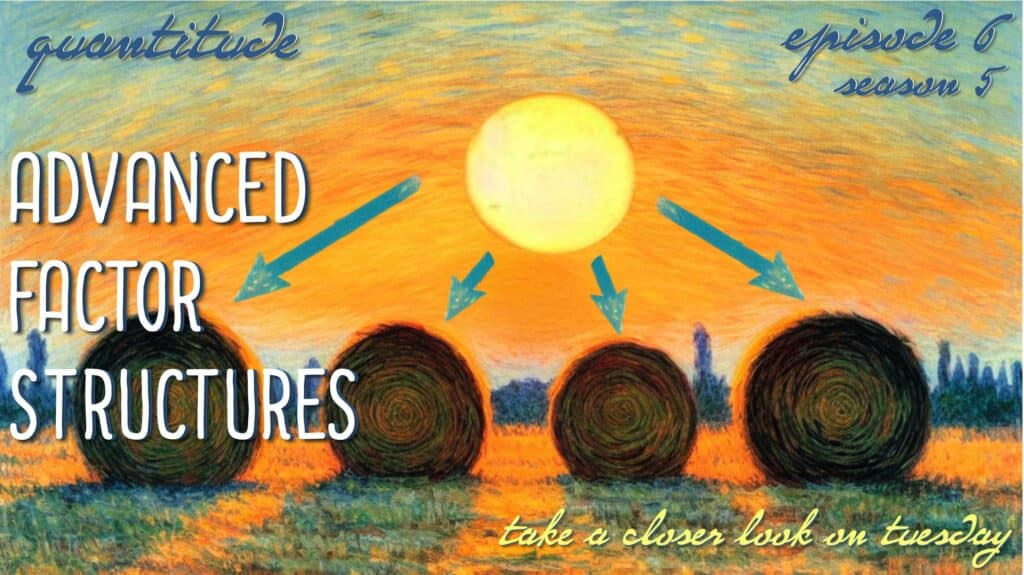In today’s episode, Patrick and Greg talk about fun extensions to the basic confirmatory factor model, including higher order models, bifactor or residualized models, and multitrait-multimethod models. Along the way they also discuss microscope lab, burning ants, substitute teaching, Cool or Creepy?, Monet, Clueless, haystacks, hotdogs, What are you thinking?, pennies and pounds, party like it’s 1904, potluck freeloaders, lips and a**holes, promiscuous models, and shock absorbers.
Suggested Readings
Bauer, D. J., Howard, A. L., Baldasaro, R. E., Curran, P. J., Hussong, A. M., Chassin, L., & Zucker, R. A. (2013). A trifactor model for integrating ratings across multiple informants. Psychological methods, 18(4), 475.
Bonifay, W., Lane, S. P., & Reise, S. P. (2017). Three concerns with applying a bifactor model as a structure of psychopathology. Clinical Psychological Science, 5(1), 184-186.
Curran, P. J., Cole, V., Giordano, M., Georgeson, A. R., Hussong, A. M., & Bauer, D. J. (2018). Advancing the study of adolescent substance use through the use of integrative data analysis. Evaluation & the health professions, 41(2), 216-245.
Curran, P. J., Georgeson, A. R., Bauer, D. J., & Hussong, A. M. (2021). Psychometric models for scoring multiple reporter assessments: Applications to integrative data analysis in prevention science and beyond. International Journal of Behavioral Development, 45(1), 40-50.
Kenny, D. A., & Kashy, D. A. (1992). Analysis of the multitrait-multimethod matrix by confirmatory factor analysis. Psychological bulletin, 112(1), 165.
Marsh, H. W., Byrne, B. M., & Craven, R. (1992). Overcoming problems in confirmatory factor analyses of MTMM data: The correlated uniqueness model and factorial invariance. Multivariate behavioral research, 27(4), 489-507.
Reise, S. P. (2012). The rediscovery of bifactor measurement models. Multivariate behavioral research, 47(5), 667-696.
Reise, S. P., Kim, D. S., Mansolf, M., & Widaman, K. F. (2016). Is the bifactor model a better model or is it just better at modeling implausible responses? Application of iteratively reweighted least squares to the Rosenberg Self-Esteem Scale. Multivariate behavioral research, 51(6), 818-838.
Rodriguez, A., Reise, S. P., & Haviland, M. G. (2016). Evaluating bifactor models: Calculating and interpreting statistical indices. Psychological methods, 21(2), 137.
Yung, Y. F., Thissen, D., & McLeod, L. D. (1999). On the relationship between the higher-order factor model nd the hierarchical factor model. Psychometrika, 64, 113-128.
Related Episodes

